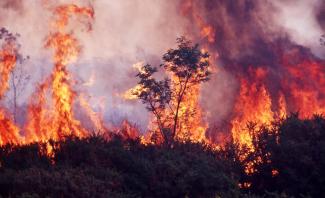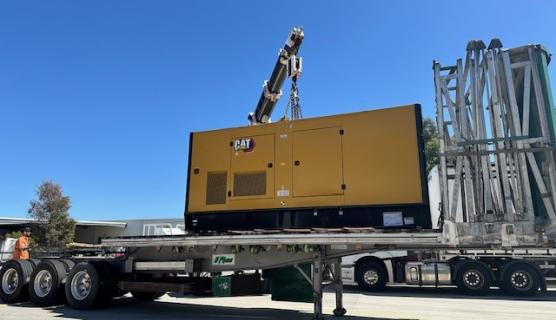Bushfire preparation in five steps
1. Prepare for bushfires by preparing your home
With bushfires, the fire itself is only one element of the danger. Radiant heat can be felt more than 100 metres away and has the potential to melt or damage things like cars and glass windows. Fire embers can spread many kilometres from the location of a large bushfire, causing smaller spot fires to break out.
The best place to start is home maintenance and you can implement some easy bushfire practices so that you are always bushfire prepared:
- Cut back branches that are growing near buildings and rake up leaves, bark and twigs.
- Clear gutters, decks and roof valleys.
- Move garden waste and rubbish away from your home, buildings and fence line.
- Ensure access to hoses, watering systems, and a water supply that does not need electric pumps – for example water tanks, swimming pools or dams.
- Make sure fire trucks and other emergency vehicles have a clear path to your property by cleaning away anything blocking the driveway and unlocking gates.
- If a fire is predicted, remove external door mats, furniture and other items that could catch on fire4
2. Check your home and contents insurance cover
Many people have found out too late that they did not have enough home and contents insurance cover for their property and assets. Regardless if you are a home owner or a renter, being insufficiently insured can be extremely costly and stressful. Check your policy and reach out to your insurer to ensure you are properly covered. Here’s some further information on questions to ask your insurer, and more handy home maintenance and house bushfire preparation tips.
To find out your local bushfire risk, go to your state or territory icon on the Australia Disaster Resilience Knowledge Hub “Understanding bushfire”.
3. Have a bushfire plan for all members of the family
A bushfire’s risk level can escalate quickly. It can be dangerous to stay in your home, and you may need to leave quickly. Having a plan means everyone in your household knows what to do in an emergency. When making a plan, you might want to include your neighbours or friends, people you know who are elderly or vulnerable in your community.
In emergencies, pets are often the most vulnerable member of the family. It’s important to consider what will happen to your pets during a natural hazard. It’s important to think about what plans you can put in place now to make sure your pet is cared for if you are unable to get home or what you would do with your pet if you had to evacuate. When making your bushfire plan consider:
- Where will you go if you need to evacuate?
- How will you get away?
- Are you ready to evacuate if you are not home?
- How much stuff can you take and what will you prioritise?
Most of us have busy and complex lives, so think about your household’s daily routine and all the different directions you all go in one day. Things you need to consider are whether your kids are at childcare, school or university, or if you or your partner are at work, and whether your pets are inside at home or outside. If there is an alert or fire warning, how do you ensure your household is bushfire prepared and protected?
Here is further information if you want some help to make a plan.
4. Pack emergency and evacuation kits
Having an emergency kit is an essential part of preparing for bushfire. Emergencies can cause your home to lose telecommunication, electricity, water and gas. You may also find yourself unable to access a supermarket or pharmacy for supplies for some time following the event. Prepare an emergency kit and store it somewhere safe so you have the things you need during an emergency and for the next several days – or even longer if you live in a remote area.
Simply grab a few extra items next time you are at the supermarket to make an emergency kit. Think about packing: long-life food and toiletries in case you can’t get to the shops; drinking water in case the water supply stops working; and batteries, a torch and a radio in case the power goes out.
These are the basics, but think about what items your family might use if you had to stay at home for three days. You can also include more items if you want.
Keep your kit in a strong waterproof storage container and store it in a safe place in your home that you can easily access.5
Make a note of the emergency kit’s location on your household emergency and evacuation plan. Here is further information and advice on what to include in your emergency kit.
5. Stay informed and find support
Lastly, staying informed and knowing where to find support before, during and after emergency events is very important to help you to plan and prepare. Staying up to date is also essential as fires can often be unpredictable and changeable and you need to be aware of what to do if there’s an increased fire danger.
The Australian Warning System has three warning levels – ‘Advice’, ‘Watch and Act’, and ‘Emergency Warning’ - and each warning level has a set of action statements giving you clear advice about what to do.
Visit the Australian Warning System website for more information.
You can also visit your state or territory emergency service by clicking the appropriate icon on the Australia Disaster Resilience Knowledge Hub.








